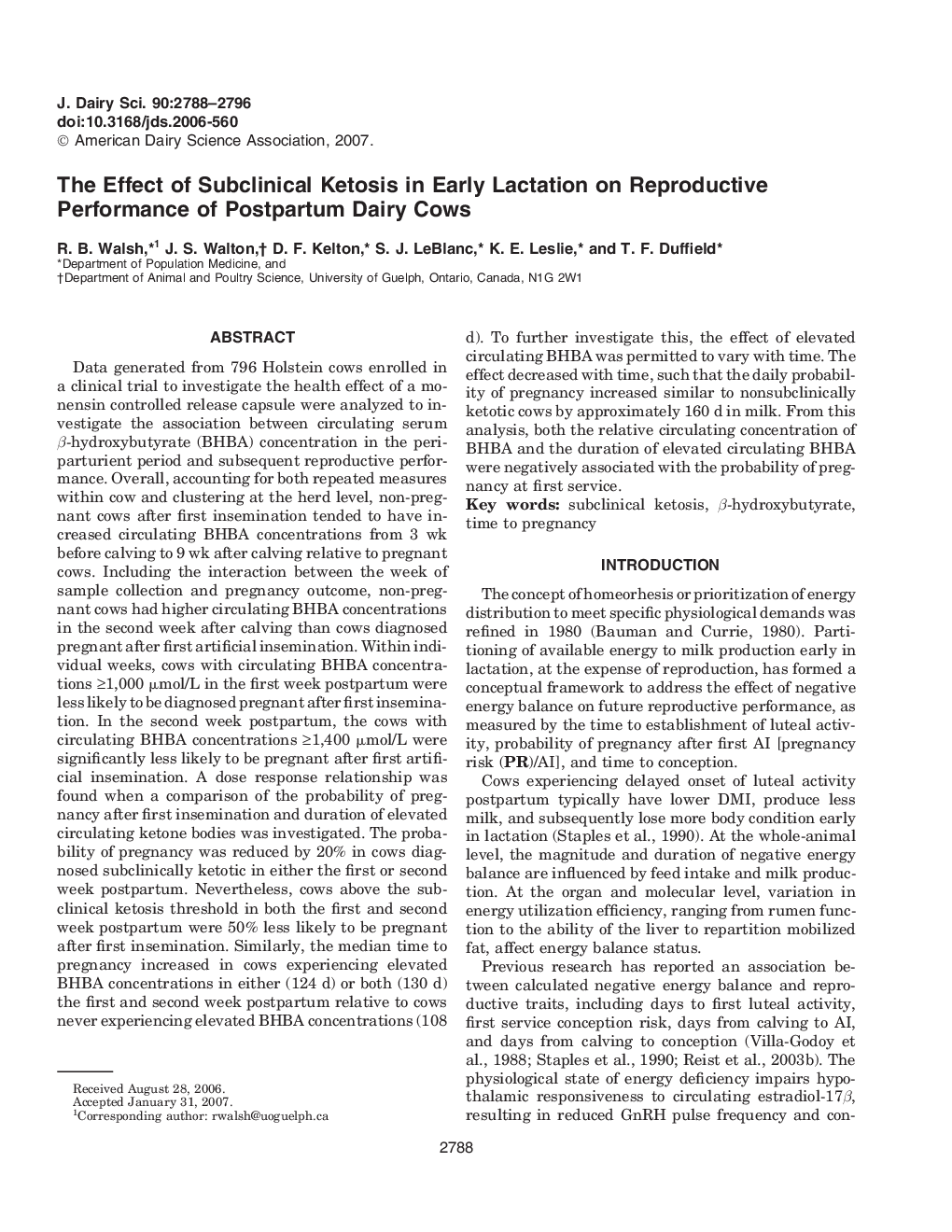| Article ID | Journal | Published Year | Pages | File Type |
|---|---|---|---|---|
| 2440905 | Journal of Dairy Science | 2007 | 9 Pages |
Abstract
Data generated from 796 Holstein cows enrolled in a clinical trial to investigate the health effect of a monensin controlled release capsule were analyzed to investigate the association between circulating serum β-hydroxybutyrate (BHBA) concentration in the peri-parturient period and subsequent reproductive performance. Overall, accounting for both repeated measures within cow and clustering at the herd level, non-pregnant cows after first insemination tended to have increased circulating BHBA concentrations from 3 wk before calving to 9 wk after calving relative to pregnant cows. Including the interaction between the week of sample collection and pregnancy outcome, non-pregnant cows had higher circulating BHBA concentrations in the second week after calving than cows diagnosed pregnant after first artificial insemination. Within individual weeks, cows with circulating BHBA concentrations â¥1,000 μmol/L in the first week postpartum were less likely to be diagnosed pregnant after first insemination. In the second week postpartum, the cows with circulating BHBA concentrations â¥1,400 μmol/L were significantly less likely to be pregnant after first artificial insemination. A dose response relationship was found when a comparison of the probability of pregnancy after first insemination and duration of elevated circulating ketone bodies was investigated. The probability of pregnancy was reduced by 20% in cows diagnosed subclinically ketotic in either the first or second week postpartum. Nevertheless, cows above the subclinical ketosis threshold in both the first and second week postpartum were 50% less likely to be pregnant after first insemination. Similarly, the median time to pregnancy increased in cows experiencing elevated BHBA concentrations in either (124 d) or both (130 d) the first and second week postpartum relative to cows never experiencing elevated BHBA concentrations (108 d). To further investigate this, the effect of elevated circulating BHBA was permitted to vary with time. The effect decreased with time, such that the daily probability of pregnancy increased similar to nonsubclinically ketotic cows by approximately 160 d in milk. From this analysis, both the relative circulating concentration of BHBA and the duration of elevated circulating BHBA were negatively associated with the probability of pregnancy at first service.
Related Topics
Life Sciences
Agricultural and Biological Sciences
Animal Science and Zoology
Authors
R.B. Walsh, J.S. Walton, D.F. Kelton, S.J. LeBlanc, K.E. Leslie, T.F. Duffield,
